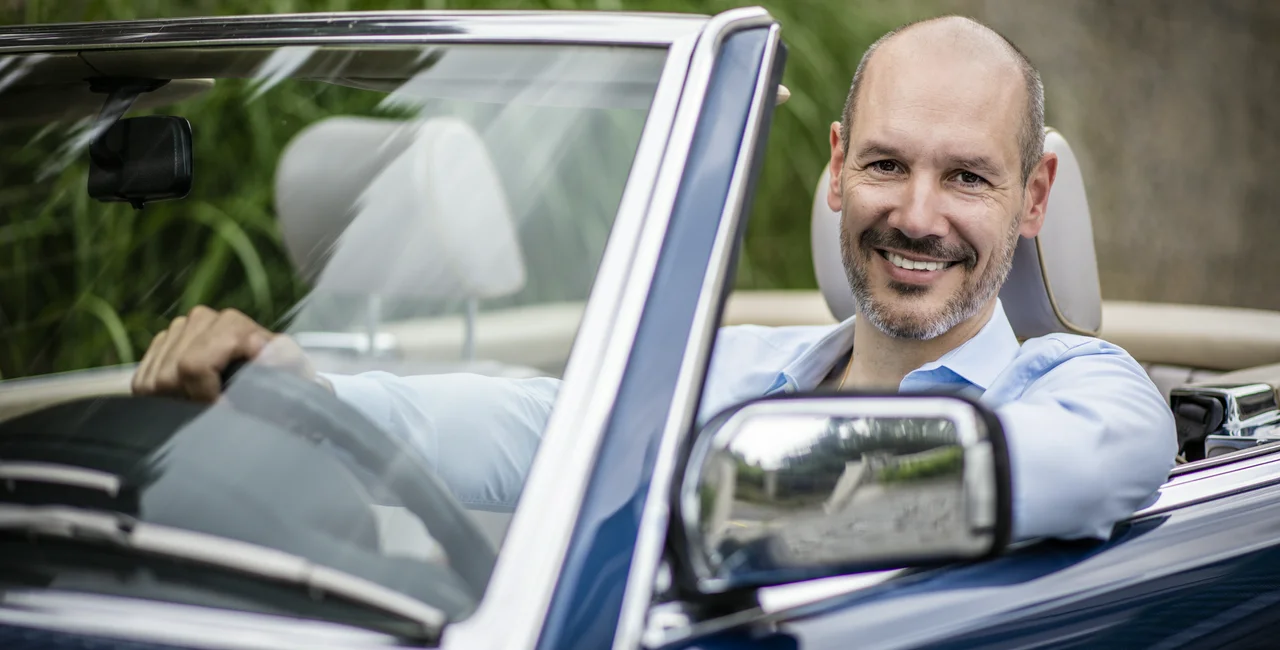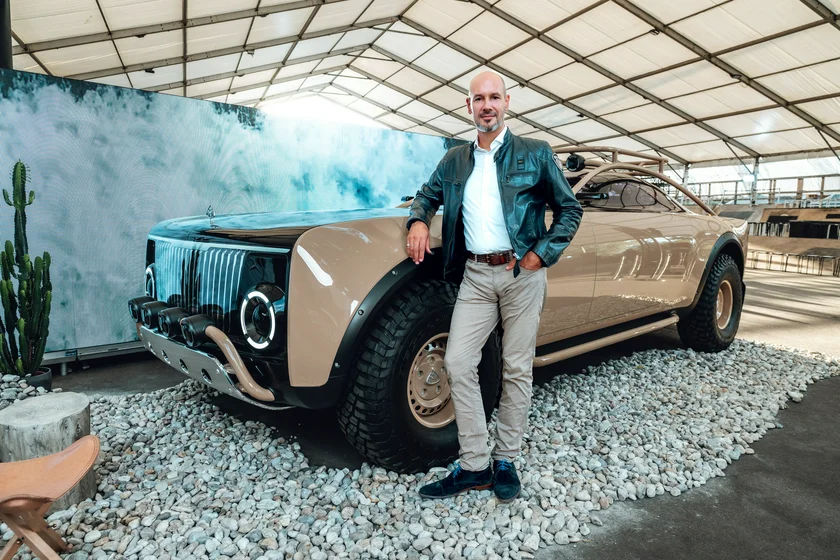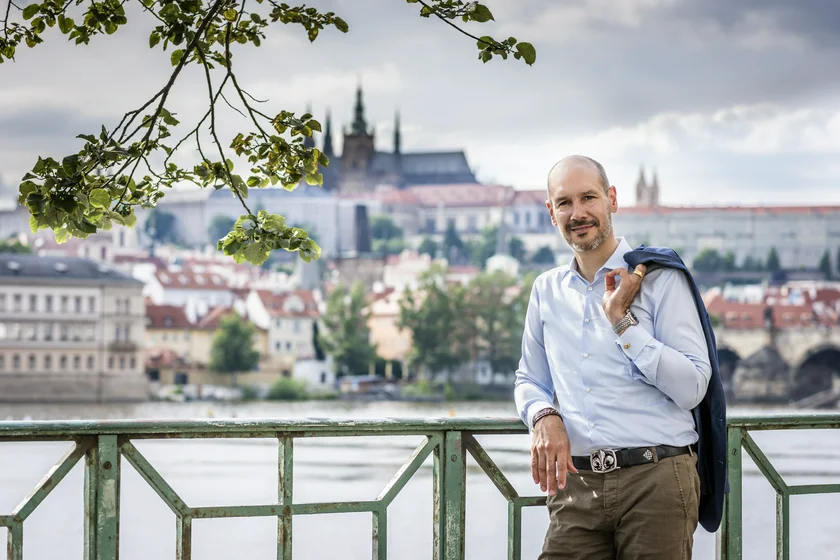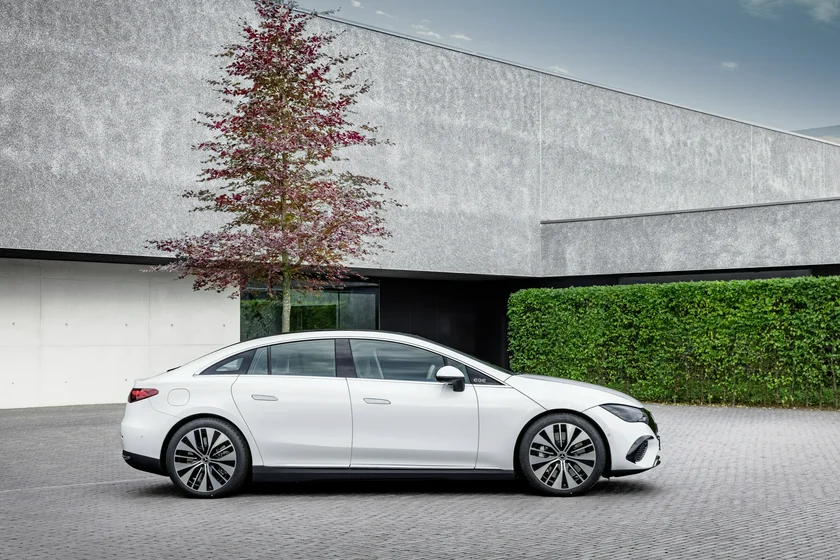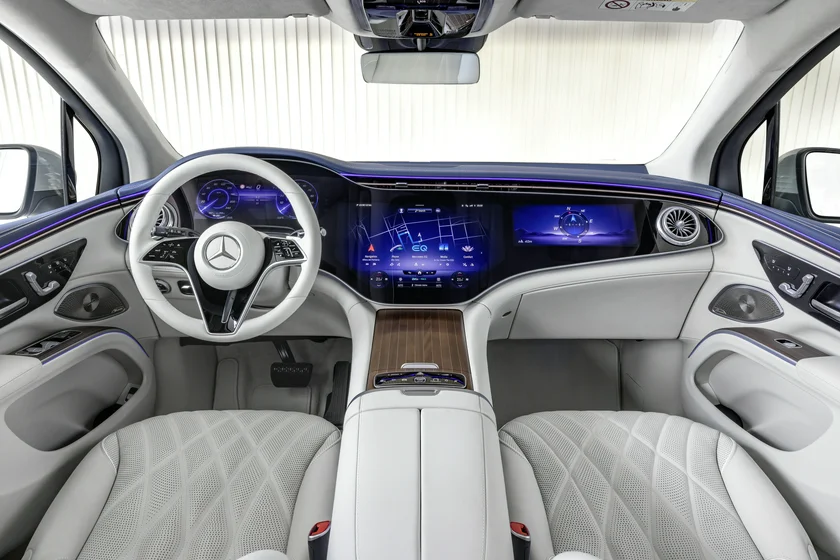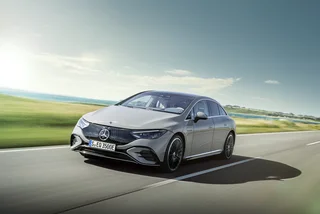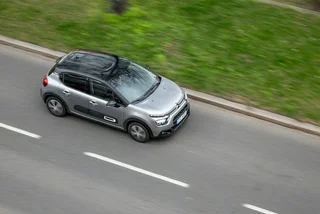The global car industry is going through a period of profound change. The shift to electric vehicles is picking up speed, leading manufacturers to push the envelope with new products, while dealing with repeated external economic shocks over recent years.
Mercedes is at the cutting edge of new car technology, and has taken on a pioneering role in the transformations affecting the automotive industry. The company is now launching new electric models on the Czech market and is focused on ushering in a new era of luxury sustainability.
Expats.cz sat down with Wolfgang Bremm von Kleinsorgen, CEO and President of Mercedes-Benz Cars Central and Eastern Europe, to discuss the evolution of the car industry, the company’s vision for the future, and his impression of running operations for a prestigious global company from the company’s base in Chodov, Prague.
Can you outline your personal journey leading you to where you are today?
I was raised in Aachen, in Germany, and I also have roots in the Mosel area. I’m a citizen of both Germany and Luxembourg; I studied mechanical engineering in Aachen, and as I was always interested in international life, I then went to Paris for an MBA. I started working with Renault in the field of fully electric vehicles around 25 years ago; I did market research on the usage of fully electric vehicles, and they subsequently stopped the production of those vehicles! But things have changed in the industry since then.
I then moved to Mercedes, working across very diverse functions. I went to Mexico, and then I worked in production, marketing and sales. My first full assignment was in the truck area of the business, and I then worked for nearly seven years in after sales across Africa, the Middle East, India and other countries. It was a very down-to-earth customer-facing experience.
I then moved into product management for passenger cars, responsible for the C-class and the E-class coupe and the convertible. This meant thinking about the cars of five to seven years in the future. My first assignment as CEO was for Mercedes vehicles in Luxembourg, where I was also the head of retail. This was a big step, making me responsible for more than 500 people at quite a young age. But I loved the direct contact with customers.
From there, I went back to the headquarters, into one of the most strategic functions in marketing and sales: product management for future cars looking far, far ahead. It was 2016, and we talked about cars which would come on the market in 2025 and later. Of course, the further you look into the future, the more open the questions are: how will electrification develop, what cars will be in-demand, and so on.
Then in 2019, I came with my family to Prague to take on my current role, responsible for five markets: Poland, the Czech Republic, Slovakia, Hungary and Romania. I love this position, because not only am I working with a fantastic team, it’s also five markets, five different cultures, five languages, and five currencies. It’s extremely diverse.
How do you find Czechia as a place to live and do business?
Prague is the best city I have ever experienced. I really love it here. From the first day that I arrived here, I felt like I could breathe. I just love the aesthetics and the beauty of the city. It’s nice everywhere, more or less.
But it’s not just about the buildings; it’s also about the Czech people. They are perhaps a bit distant in the first approach, so they don’t hug you like Americans do! But they’re very reliable, and they do more than they talk. This is a contrast to some other countries, outside my current responsibilities, where sometimes you hear more talking and less doing.
I find there to be a very professional approach. And I believe that central and eastern Europe is in some ways advancing ahead of western Europe. Digitalization in daily life is ahead here compared to many western markets. And there’s a liberal mindset; as long as you don’t harm others, everyone should do what they want. This is one of the reasons why I love to live here with my family; our second son was born here in Prague, and I’m proud of that.
Does the Czech Republic’s rich heritage as an automotive country help Mercedes’ business here?
Czech people are very interested in cars, and this makes it a good market for us. They love the brand, and our luxury approach, which we increasingly focus on, is fitting very nicely with our Czech customer base. I see Czech people as modern-oriented, not old-fashioned. They’re looking to the future.
This is good for us, because it must be said that Mercedes is daring a lot. When it comes to design, we are making big steps compared to other brands. An example is our fully electric fleet, which is designed so that you can see from outside that they are electric cars. There’s the strategy behind this, we call it “one-bow” design: for fully electric models, the emphasis is on the interior, so the design shows off the inside of the vehicle instead of emphasizing an engine under the hood, as is the case with combustion-engine cars.
Mercedes has a story to tell, and customers trust that we have a reason for doing things the way that we do them. This is a great strength for us.
Do you think “petrol heads” will be just as excited about electric cars in the future as they are today about combustions-engine cars?
You always find different customer profiles. Some will intentionally go for a fully electric car because of the environmental aspects, while others focus on having a car which is the most modern, and being a trend-setter.
Being a luxury brand, we’re in the position to say that we will go fully electric over time. I think it’s very important that the characteristics of the new cars are strong, and in this context, it’s vital to have fully electric platforms. If you do everything on the same platform, you’ll always have compromises, whether with the electric or the combustion engine. This is really important looking ahead to the long term.
You mentioned Mercedes’ focus on luxury. Is this successful in a country like Czechia, which is still poorer than some western and northern European nations?
The real comparison is between where you are today and where you’ve come from. In the Czech Republic and the other Central and Eastern European markets, I see stronger development over the coming years than in most other established markets. In a year-on-year comparison, I see good opportunities for further development here.
What the Czech Republic needs to work on is electrification throughout the network. This includes from the state, taking into account the overall infrastructure. The country must develop, or else it will fall behind. This means better charging infrastructure, which is poor today compared to some other markets. Not everyone has a garage with their own charging facility, so the public infrastructure needs to be prepared.
More than 10 percent of Mercedes cars now being sold here are electrified vehicles, whether that’s fully electric or plug-in hybrids. The fact that there’s no state subsidy for electric vehicles shows that these purchases are happening because the customers like the cars, not because it’s simply a more attractive business proposition. This is very positive.
Sometimes customers need to overcome a hurdle in their own mind about choosing an electric car. But most of them, once they drive these cars, realize what a pleasure they are. The silence of the drive is a major part of this, but also, those who have the capability to charge their car regularly are freer, because they don’t need to go out of their way to a gas station.
Are the infrastructural problems for electric vehicles mostly outside the big cities, in more rural areas?
When it comes to public infrastructure, yes. But some people based outside cities may make the same runs in the car every day, and then it may even be easier for them. And if you have a home in a rural area, you’re more likely to be capable of having your own charging facility, and that makes you independent, whereas today you might have to go 10 km to the nearest gas station.
But of course, the switch to fully-electric will only happen if people can drive around the country at will, and for that you need the charging infrastructure.
Is there a major difference in the parameters which people focus on when choosing an electric car, compared to a petrol one?
For a combustion-engine car, range is not the biggest concern, but it’s one of the major parameters for fully electric cars. We’re proud that our EQS model offers up to 780 km on a single charge. Another big topic for combustion-engine cars is acceleration; but electric cars all have such fast acceleration that it’s not a major parameter for choosing between them. These are both areas where the parameters for choosing a car are changing.
There’s also the experience within the car. Mercedes invests a lot of thought and energy into developing an overall user experience. This includes a more silent and smoother driving experience, which allows you to enjoy the quality of the materials, the design, the display systems, the seat massage, and so on. It’s about the experience of comfort in a very modern interpretation.
That’s what’s changing. But what’s staying the same is that the car is always an expression of yourself. It’s always an emotional purchase. It’s a way of saying something about yourself to your colleagues, your neighbors, and the people around you. That’s why it’s so important that Mercedes has developed a modern luxury approach.
You can find parallels in interior design. Twenty or thirty years ago, luxury was about opulence, heavy materials, and ornamental fixtures. Today, it’s more about simplicity and minimalism; a high-value design and high-value materials. If you sit in a Mercedes car today, you feel that same “sleek” approach.
When Mercedes designs a new car, how does the interplay between the artistic design and more technical aspects work?
The focus on design is very strong in Mercedes. The word you used is good: artistry. I think they are artists, in a certain way. At the same time, a car design has to be very technically oriented. It’s always about the usage, and you have to apply a lot of rules which are often given by worldwide regulations.
For example, you have to consider the shortest five percent of people when designing a car, so that they can still look past the steering wheel to the street. Seat positioning needs to be considered, and then there are all the aspects of aerodynamics, which affect range. It’s extremely complex.
You have to bring together a range of divergent targets into a single product: the technical features, the safety regulations and systems which take up space in the car, the aesthetic design, financial considerations, and environmental considerations, including our use of “green steel” and renewable energies in production.
I was initially amazed when I learned how much the Mercedes board members take time, together with the designers, to really go into the details. They are very closely involved, and I think that’s important in giving the brand a strategy and a consistent image.
The EU has agreed a ban on the sale of combustion-engine vehicles from 2035. How well placed is Mercedes to deal with this change?
Mercedes took a decision last year to go for a fully-electric platform approach. This means that from 2025 onwards, no new platform will be developed which is not fully electric. Of course, we will continue our current platforms with combustion-engine cars. This decision means we will be fully prepared for such a law.
The pandemic brought about supply chain shocks which strongly affected the car industry. Have these issues been smoothed out, or are there still problems?
The big challenge is that after Covid, we had the effects of the war. So limitations in production, caused by limitations for suppliers, limitations in the supply of raw material, and other unusual trends in the industry continue to have a strong effect.

The automotive industry is particularly affected because its supply chains are, and always have been, very optimized. The kind of disturbance caused by Covid and the war has not been experienced in recent decades, so we’ve been facing problems which we haven’t seen before.
On the other hand, we can be proud that we are still robust as a company. But we are very sorry and apologize to any customers who have had to wait longer than they hoped.
Despite these one-off shocks to the economy, the general global trend remains an increase in wealth. And our drive to modernize, focusing more on customer experience, is being boosted by digitalization. That people have been urged to use more digital tools in recent years may have even boosted preparedness for these changes among our customers. This has always been part of our plan, but perhaps even more so today.
This article was written in cooperation with Mercedes-Benz Česká republika s.r.o. Read more about our partner content policies here.












 Reading time: 10 minutes
Reading time: 10 minutes 